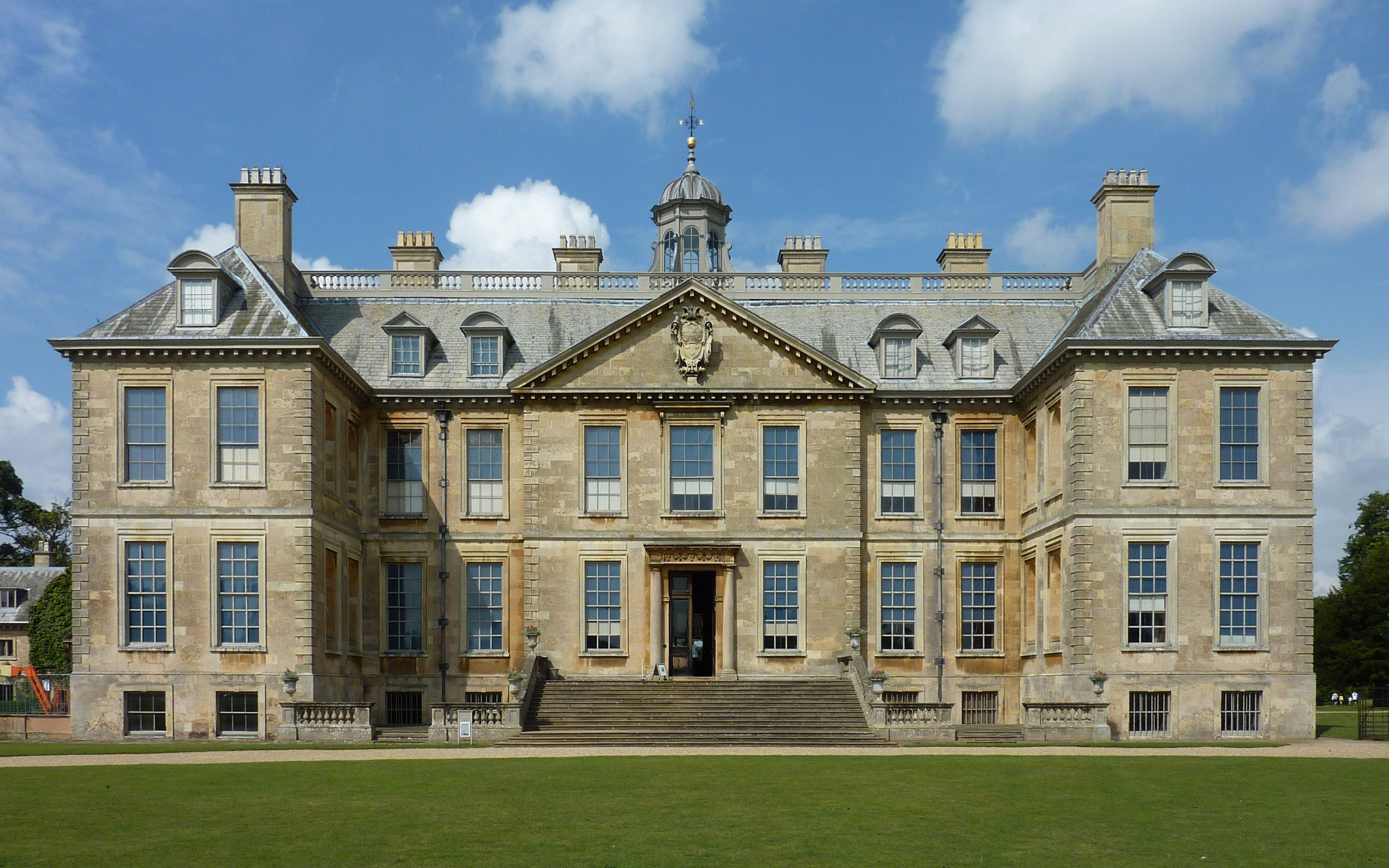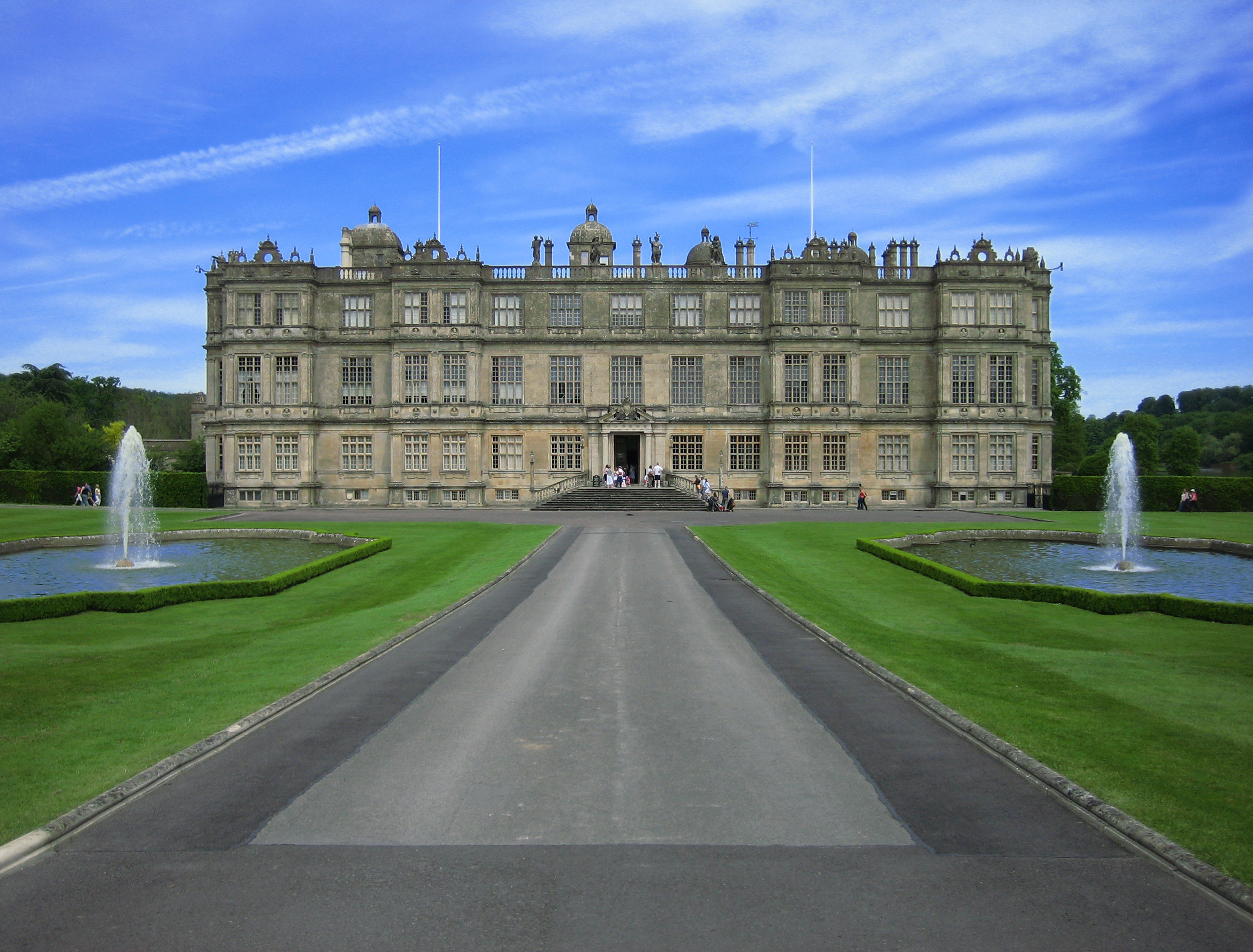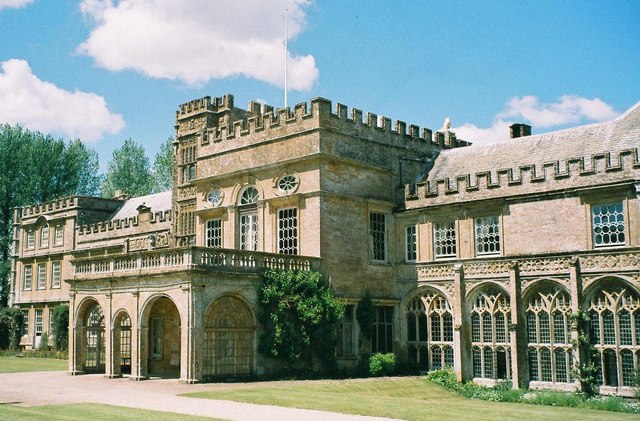English Country House on:
[Wikipedia]
[Google]
[Amazon]
 An English country house is a large house or
An English country house is a large house or
 The term ''stately home'' is subject to debate, and avoided by historians and other academics. As a description of a country house, the term was first used in a poem by
The term ''stately home'' is subject to debate, and avoided by historians and other academics. As a description of a country house, the term was first used in a poem by  In England, the terms "country house" and "stately home" are sometimes used vaguely and interchangeably; however, many country houses such as Ascott in Buckinghamshire were deliberately designed not to be stately, and to harmonise with the landscape, while some of the great houses such as
In England, the terms "country house" and "stately home" are sometimes used vaguely and interchangeably; however, many country houses such as Ascott in Buckinghamshire were deliberately designed not to be stately, and to harmonise with the landscape, while some of the great houses such as
 The country houses of England have evolved over the last five hundred years. Before this time, larger houses were usually fortified, reflecting the position of their owners as
The country houses of England have evolved over the last five hundred years. Before this time, larger houses were usually fortified, reflecting the position of their owners as
 An English country house is a large house or
An English country house is a large house or mansion
A mansion is a large dwelling house. The word itself derives through Old French from the Latin word ''mansio'' "dwelling", an abstract noun derived from the verb ''manere'' "to dwell". The English word '' manse'' originally defined a property l ...
in the English countryside. Such houses were often owned by individuals who also owned a town house
A townhouse, townhome, town house, or town home, is a type of terraced housing. A modern townhouse is often one with a small footprint on multiple floors. In a different British usage, the term originally referred to any type of city residence ...
. This allowed them to spend time in the country and in the city—hence, for these people, the term distinguished between town and country. However, the term also encompasses houses that were, and often still are, the full-time residence for the landed gentry
The landed gentry, or the ''gentry'', is a largely historical British social class of landowners who could live entirely from rental income, or at least had a country estate. While distinct from, and socially below, the British peerage, th ...
who dominated rural Britain until the Reform Act 1832
The Representation of the People Act 1832 (also known as the 1832 Reform Act, Great Reform Act or First Reform Act) was an Act of Parliament, Act of Parliament of the United Kingdom (indexed as 2 & 3 Will. IV c. 45) that introduced major chan ...
. Frequently, the formal business of the counties
A county is a geographic region of a country used for administrative or other purposesChambers Dictionary, L. Brookes (ed.), 2005, Chambers Harrap Publishers Ltd, Edinburgh in certain modern nations. The term is derived from the Old French ...
was transacted in these country houses, having functional antecedents in manor houses
A manor house was historically the main residence of the lord of the manor. The house formed the administrative centre of a manor in the European feudal system; within its great hall were held the lord's manorial courts, communal meals with ...
.
With large numbers of indoor and outdoor staff, country houses were important as places of employment for many rural communities. In turn, until the agricultural depressions of the 1870s, the estates, of which country houses were the hub, provided their owners with incomes. However, the late 19th and early 20th centuries were the swansong of the traditional English country house lifestyle. Increased taxation and the effects of World War I led to the demolition of hundreds of houses; those that remained had to adapt to survive.
While a château
A château (; plural: châteaux) is a manor house or residence of the lord of the manor, or a fine country house of nobility or gentry, with or without fortifications, originally, and still most frequently, in French-speaking regions.
Nowaday ...
or a ''Schloss
''Schloss'' (; pl. ''Schlösser''), formerly written ''Schloß'', is the German term for a building similar to a château, palace, or manor house.
Related terms appear in several Germanic languages. In the Scandinavian languages, the cognate ...
'' can be a fortified or unfortified building, a country house, similar to an ''Ansitz
An ''Ansitz'' is a small residence designed for the lower nobility of the Germanic Alpine region.
History
The concept of ''Ansitz'' dates back to the end of the Middle Ages up to the 19th century. Unlike castles, they were hardly fortified. T ...
'', is usually unfortified. If fortified, it is called a castle, but not all buildings with the name "castle" are fortified (for example Highclere Castle
Highclere Castle is a Grade I listed country house built in 1679 and largely renovated in the 1840s, with a park designed by Capability Brown in the 18th century. The estate is in Highclere in Hampshire, England, about south of Newbury, ...
in Hampshire
Hampshire (, ; abbreviated to Hants) is a ceremonial county, ceremonial and non-metropolitan county, non-metropolitan counties of England, county in western South East England on the coast of the English Channel. Home to two major English citi ...
).
Stately homes of England
 The term ''stately home'' is subject to debate, and avoided by historians and other academics. As a description of a country house, the term was first used in a poem by
The term ''stately home'' is subject to debate, and avoided by historians and other academics. As a description of a country house, the term was first used in a poem by Felicia Hemans
Felicia Dorothea Hemans (25 September 1793 – 16 May 1835) was an English poet (who identified as Welsh by adoption). Two of her opening lines, "The boy stood on the burning deck" and "The stately homes of England", have acquired classic statu ...
, "The Homes of England", originally published in ''Blackwood's Magazine
''Blackwood's Magazine'' was a British magazine and miscellany printed between 1817 and 1980. It was founded by the publisher William Blackwood and was originally called the ''Edinburgh Monthly Magazine''. The first number appeared in April 1817 ...
'' in 1827. In the 20th century, the term was later popularised in a song by Noël Coward
Sir Noël Peirce Coward (16 December 189926 March 1973) was an English playwright, composer, director, actor, and singer, known for his wit, flamboyance, and what ''Time'' magazine called "a sense of personal style, a combination of cheek and ...
, and in modern usage it often implies a country house that is open to visitors at least some of the time.
 In England, the terms "country house" and "stately home" are sometimes used vaguely and interchangeably; however, many country houses such as Ascott in Buckinghamshire were deliberately designed not to be stately, and to harmonise with the landscape, while some of the great houses such as
In England, the terms "country house" and "stately home" are sometimes used vaguely and interchangeably; however, many country houses such as Ascott in Buckinghamshire were deliberately designed not to be stately, and to harmonise with the landscape, while some of the great houses such as Kedleston Hall
Kedleston Hall is a neo-classical manor house, and seat of the :Curzon family, Curzon family, located in Kedleston, Derbyshire, approximately 4 miles (6 km) north-west of Derby. The medieval village of Kedleston was moved in 1759 by Nathanie ...
and Holkham Hall
Holkham Hall ( or ) is an 18th-century English country house, country house near the village of Holkham, Norfolk, England, constructed in the Neo-Palladian style for the Thomas Coke, 1st Earl of Leicester (fifth creation), 1st Earl of Leicester ...
were built as "power houses" to dominate the landscape, and were most certainly intended to be "stately" and impressive. In his book ''Historic Houses: Conversations in Stately Homes'', the author and journalist Robert Harling documents nineteen "stately homes"; these range in size from the vast Blenheim Palace
Blenheim Palace (pronounced ) is a country house in Woodstock, Oxfordshire, England. It is the seat of the Dukes of Marlborough and the only non-royal, non- episcopal country house in England to hold the title of palace. The palace, on ...
and Castle Howard
Castle Howard is a stately home in North Yorkshire, England, within the civil parish of Henderskelfe, located north of York. It is a private residence and has been the home of the Carlisle branch of the Howard family for more than 300 years. ...
to the minuscule Ebberston Hall
Ebberston Hall is a Grade II* listed country house in Ebberston, North Yorkshire, England. It was built in the 18th century for William Thompson. It was subsequently inherited by Sir Charles Hotham-Thompson, 8th Baronet, followed by Beaumont Hoth ...
, and in architecture from the Jacobean Renaissance of Hatfield House
Hatfield House is a country house set in a large park, the Great Park, on the eastern side of the town of Hatfield, Hertfordshire, England. The present Jacobean house, a leading example of the prodigy house, was built in 1611 by Robert Ceci ...
to the eccentricities of Sezincote
Sezincote House (pronounced ''seas in coat'') is the centre of a country estate in the civil parish of Sezincote, in the county of Gloucestershire, England. The house was designed by Samuel Pepys Cockerell, built in 1805, and is a notable exampl ...
. The book's collection of stately homes also includes George IV's Brighton town palace, the Royal Pavilion
The Royal Pavilion, and surrounding gardens, also known as the Brighton Pavilion, is a Grade I listed former royal residence located in Brighton, England. Beginning in 1787, it was built in three stages as a seaside retreat for George IV of t ...
.
Evolution
 The country houses of England have evolved over the last five hundred years. Before this time, larger houses were usually fortified, reflecting the position of their owners as
The country houses of England have evolved over the last five hundred years. Before this time, larger houses were usually fortified, reflecting the position of their owners as feudal lords
Feudalism, also known as the feudal system, was the combination of the legal, economic, military, cultural and political customs that flourished in medieval Europe between the 9th and 15th centuries. Broadly defined, it was a way of structur ...
, ''de facto'' overlords of their manors. The Tudor period
The Tudor period occurred between 1485 and 1603 in History of England, England and Wales and includes the Elizabethan period during the reign of Elizabeth I until 1603. The Tudor period coincides with the dynasty of the House of Tudor in Englan ...
of stability in the country saw the building of the first of the unfortified great houses. Henry VIII
Henry VIII (28 June 149128 January 1547) was King of England from 22 April 1509 until his death in 1547. Henry is best known for his six marriages, and for his efforts to have his first marriage (to Catherine of Aragon) annulled. His disa ...
's Dissolution of the Monasteries saw many former ecclesiastical
{{Short pages monitor
online book review
* Details the impact of social change on design. * * * * Gives much detail of how a smaller country house operated in the early 20th century. * * * * Robinson, John Martin, ''The English Country Estate'', 1988, Century Hutchinson/ National Trust, ISBN 0712622756 * *
The National Trust – England, Wales, & Northern Ireland
The National Trust for Scotland
English Heritage
Historic Houses Association
Hudson's Historic Houses and Gardens
–
The DiCamillo Companion to British & Irish Country Houses
Lost Heritage – A Memorial to the Lost Country Houses of England
{{Authority control
Media
* '' Country Life'' * ''Downton Abbey
''Downton Abbey'' is a British historical drama television series set in the early 20th century, created and co-written by Julian Fellowes. The series first aired in the United Kingdom on ITV on 26 September 2010 and in the United States on P ...
''
* ''The Edwardian Country House
''The Edwardian Country House'' is a British historical reenactment reality television miniseries produced by Channel 4. First aired weekly in the UK beginning in April 2002, it was later broadcast in the United States on PBS stations as ''Man ...
'' (a Channel 4
Channel 4 is a British free-to-air public broadcast television network operated by the state-owned enterprise, state-owned Channel Four Television Corporation. It began its transmission on 2 November 1982 and was established to provide a four ...
series)
* ''Country House
An English country house is a large house or mansion in the English countryside. Such houses were often owned by individuals who also owned a town house. This allowed them to spend time in the country and in the city—hence, for these peopl ...
''
References
Sources and further reading
* * Coutu, Joan, et al. eds. ''Politics and the English Country House, 1688–1800'' (McGill-Queen's University Press, 2023online book review
* Details the impact of social change on design. * * * * Gives much detail of how a smaller country house operated in the early 20th century. * * * * Robinson, John Martin, ''The English Country Estate'', 1988, Century Hutchinson/ National Trust, ISBN 0712622756 * *
External links
The National Trust – England, Wales, & Northern Ireland
The National Trust for Scotland
English Heritage
Historic Houses Association
Hudson's Historic Houses and Gardens
–
Hudson's
The J. L. Hudson Company (commonly known simply as Hudson's) was an upscale retail department store chain based in Detroit, Michigan. Hudson's flagship store, on Woodward Avenue in Downtown Detroit (demolished October 24, 1998), was the tallest d ...
list of 2,000 properties open to the public
The DiCamillo Companion to British & Irish Country Houses
Lost Heritage – A Memorial to the Lost Country Houses of England
{{Authority control
Country house
An English country house is a large house or mansion in the English countryside. Such houses were often owned by individuals who also owned a town house. This allowed them to spend time in the country and in the city—hence, for these peopl ...
House types in the United Kingdom
House styles